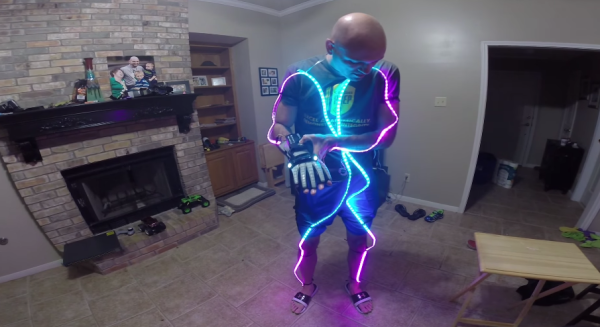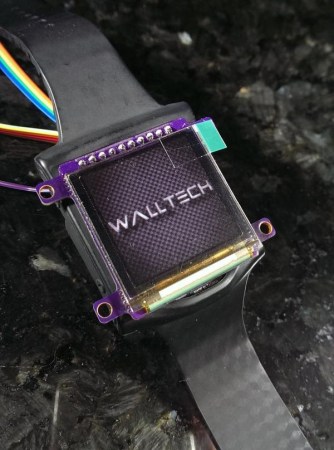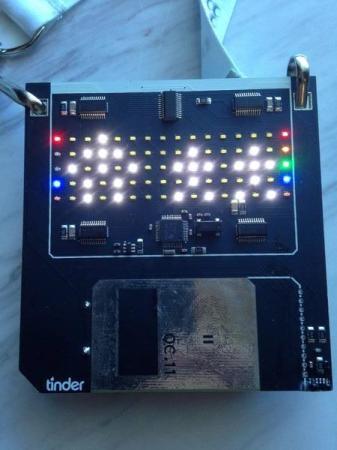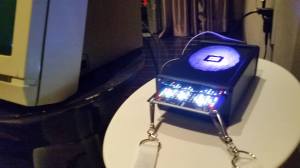In June of 2014, [Afrdt] spent two weeks on a boat as an artist-in-residence in Linz, Austria. During that time, she created a dress that detects EMF waves and outputs them to vibration motors and a headphone jack.
[Afrdt] started by making two EMF coil antennas and sewed them to cuffs that snap together. She crafted fashionable fabric stripes that both conceal and carry the cables from the coils to an Adafruit FLORA that’s sewn into the body of the dress. The wearer experiences haptic feedback via vibration motors in the chest, and sonic feedback from a mini female headphone jack built into the collar. The zipper functions as a low-pass filter and volume control for the jack. One side bears resistive tape and runs to the FLORA, which is programmed to play an 800Hz tone. The other side runs to the headphone jack via conductive thread. As the zipper is opened, the pitch increases to toward the maximum pitch of 880Hz.
She drew inspiration for this project from [Aaron Alai]’s EMF detector project and built the code on top of it. Broader documentation and many more pictures are available both at [Afrdt]’s site and the residency program’s site.
 This project is an official entry to The Hackaday Prize that sadly didn’t make the quarterfinal selection. It’s still a great project, and worthy of a Hackaday post on its own.
This project is an official entry to The Hackaday Prize that sadly didn’t make the quarterfinal selection. It’s still a great project, and worthy of a Hackaday post on its own.

















